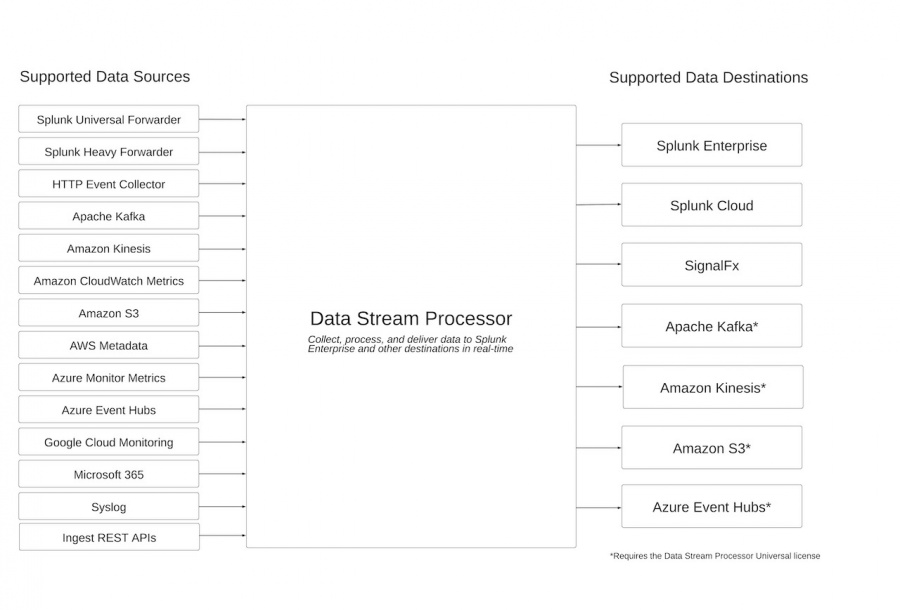About the Data Stream Processor
The Splunk Data Stream Processor (DSP) is a data stream processing service that processes data in real-time and sends that data to your platform of choice. During the processing stage, the Splunk DSP allows you to perform complex transformations and troubleshooting on your data before that data is indexed. Use the Data Stream Processor to do the following tasks on data-in-motion.
- Data aggregation: Aggregate data based on specific conditions.
- Data formatting: Format or organize data using various functions based on specified conditions.
- Data routing: Guarantee delivery of high-volume, high-velocity data to multiple destinations.
- Filtering: Filter or route noisy data to specific destinations.
For basic instructions on how to get started on these tasks, see the Splunk DSP use cases chapter.
Get started
For installation information, see the Install and administer the Data Stream Processor manual. For release notes, see the Release notes manual. To get started with a tutorial, see the Tutorial manual.
The following diagram summarizes supported data sources and data destinations.

| Data Stream Processor terminology |
This documentation applies to the following versions of Splunk® Data Stream Processor: 1.1.0
 Download manual
Download manual
Feedback submitted, thanks!